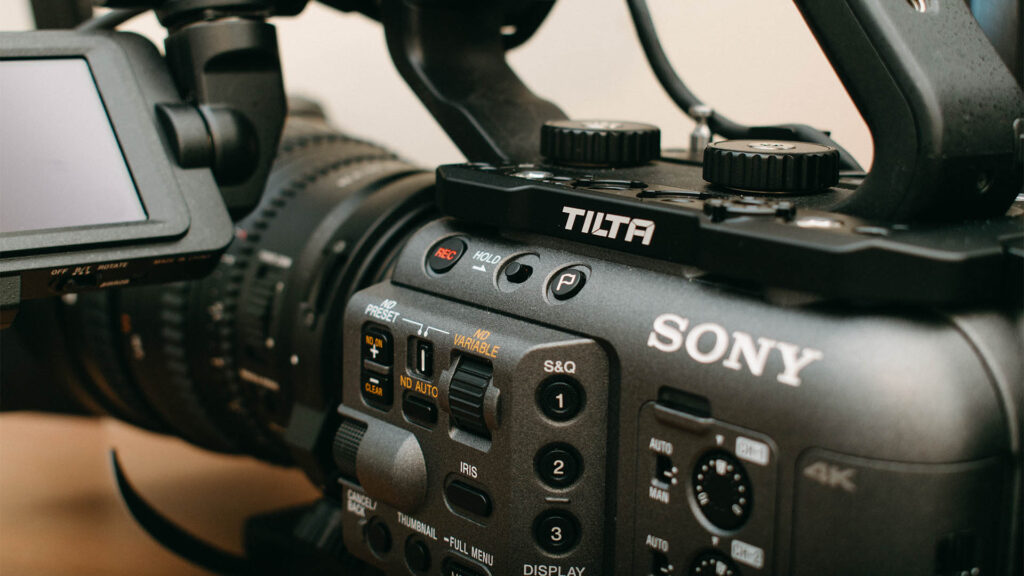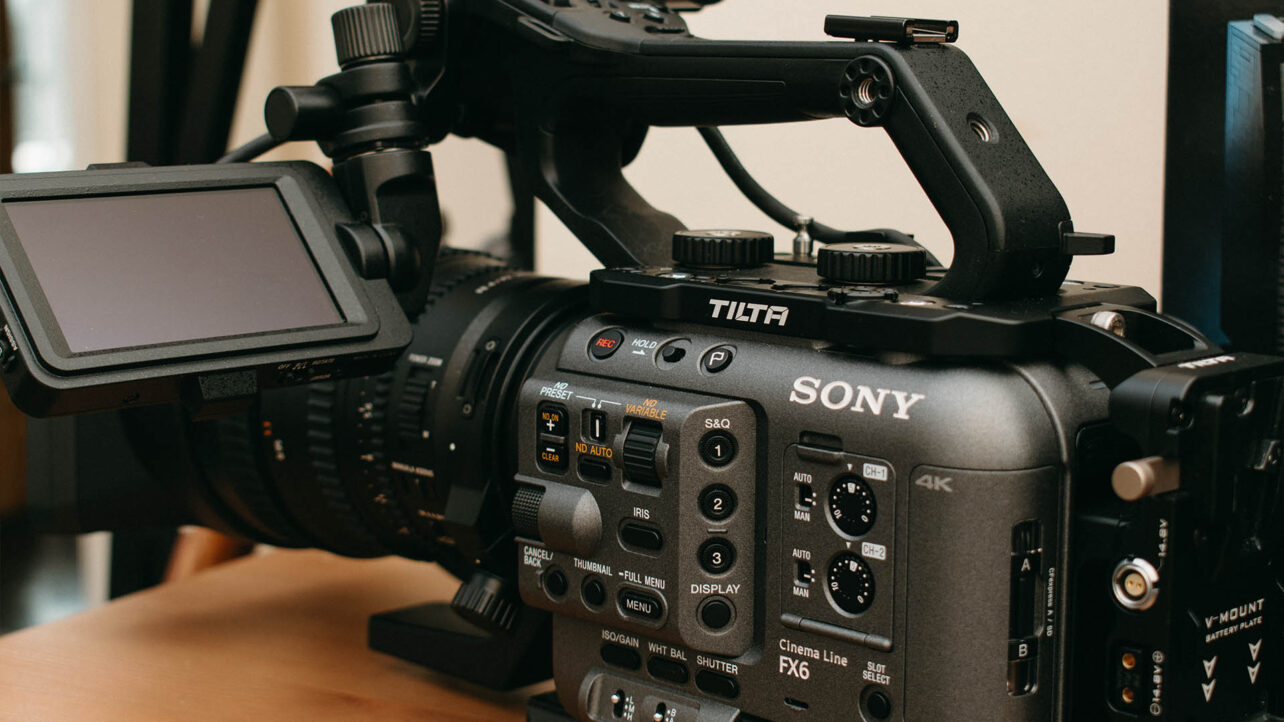The FX6, like most modern cinema cameras, has a variety of easy-access buttons situated all over the camera—quite literally, too. Outside of the bottom, there are pressable buttons, knobs, and toggle wheels on all sides of the FX6 and its attachment handles. If you have only ever used a mirrorless camera where most of the functionality comes from its touchscreen, you might not realize just how beneficial these quick-access buttons can be.
When moving from the C300 Mk III to the RED KOMODO, while the picture quality surpassed that of the C300 Mk III, the functionality did not, and I quickly needed to revert back to a camera that had the necessary functionality: enter the FX6.
However, while these features are great for quick access and changing an important function on the fly, like adjusting the variable ND, they are also prone to being accidentally knocked by the operator. And the last thing you want during a shot is to change the ISO mid-shot accidentally.
FX6 Hold Switch
Thankfully, however, the FX6 features a hold switch—well, two, in fact. This essentially acts as a lock button that disables access to the buttons scattered across the camera. When working in a high-stress environment, such as navigating through a bustling crowd, this feature becomes a godsend. It allows you to record without worrying about accidentally pressing any of the function buttons. Or perhaps, when there’s a once-in-a-lifetime shot you need to capture, flicking the hold switch ensures peace of mind by preventing any unintended button presses.

You can find one switch located on the body itself, next to the record button, and another on the official Sony ILME-FX6 top handle. However, it’s important to note that the hold switch on the handle only affects the buttons on the handle itself and does not impact those on the body. Conversely, if the body’s hold switch is active, it should be noted that you can still press the record button on the top handle, but the other functions are locked.

The Hold Switch: What It Doesn’t Control
However, while it’s great to know that you can rest assured with the hold switch in position, it’s equally important to know that there are still a number of camera buttons and switches that remain active when the hold switch is on.
What are they?
- Audio Input Switches
- Audio recording level dials
- Auto-Focus switch
- Gain Toggle Switch
- Peak Button (on LCD Monitor)
- Power switch
- White Balance Toggle Switch
- Zebra Button (on LCD Monitor)
Despite the hold switch being engaged to prevent unintended adjustments, it’s crucial to recognize that several critical functions of your camera remain accessible. This design ensures that essential features such as audio input adjustments, auto-focus, and gain settings can still be managed without the need to disengage the hold function. Given the nature of the design of these switches, I would wager it would be a tough task to change these features accidentally.
For more on camera tech, check out these articles:

